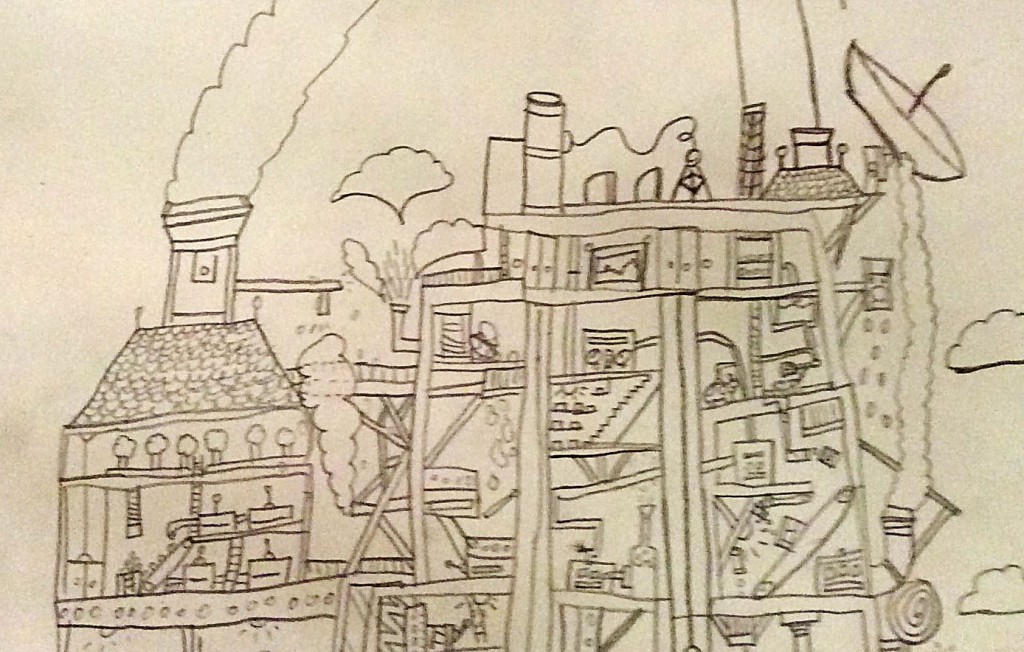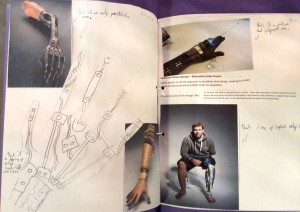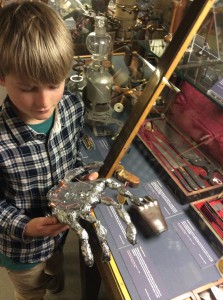Making the Dreams of Homunculi
By Vid Simoniti
When Charles Ogilvie and I were tasked with making this video work to coincide with the Alchemy and the Laboratory exhibit, we took the painting below as a starting point. It shows a bearded scholar, who directs four putti in his laboratory. Paintings of the genre often satirized the alchemist, but what stands out here is the utter self-confidence of everyone involved. What are these little winged men up to? Are they making the philosophers’ stone, gold from lead, or the homunculus, a proposed miniature, yet fully-formed, man?
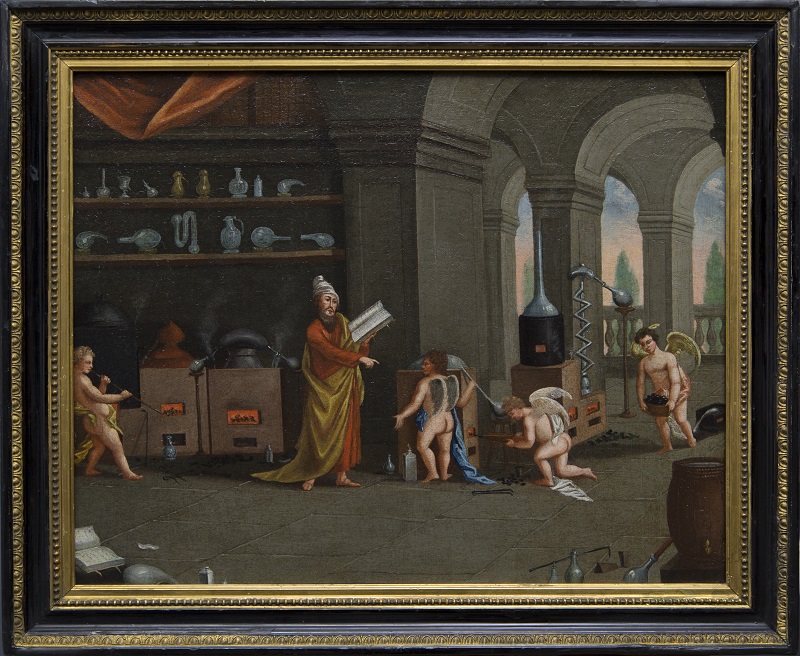
If not a satire, the painting could perhaps be read as an alchemical allegory—an alchemical recipe described in a visual riddle. Interestingly, it is not the winged putti but the vessels in the background that seem arranged in a hidden, perhaps alchemical order. We played with the vessels as 3D objects, and it’s obvious that many would not be able to stand up in reality; the painter clearly just made them up.
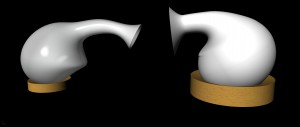 Around these oddball figures, we weaved the legend of the homunculus. This artificially-made miniature man was said to have been created by the alchemist Paracelsus, and appeared in various guises in alchemical texts – sometimes he was thought of as a spiritual being, who would reveal some secret knowledge to its maker. Perhaps the putti in the painting are themselves homunculi?
Around these oddball figures, we weaved the legend of the homunculus. This artificially-made miniature man was said to have been created by the alchemist Paracelsus, and appeared in various guises in alchemical texts – sometimes he was thought of as a spiritual being, who would reveal some secret knowledge to its maker. Perhaps the putti in the painting are themselves homunculi?
However, instead of drawing on alchemical manuscripts proper, we looked at later, 17th-century texts that mention the creature (Early English Books Online is excellent for finding this material). To shape these sources into dramatic form, we drew inspiration from poetry by the natural philosopher Margaret Cavendish. She expressed her idiosyncratic scientific worldview in rather awkward rhymes and riddles, tapping into an older tradition of rhyming alchemists such as George Ripley. Another source was the homunculus in the second part of Goethe’s Faust (1832), who also speaks in rhyme, though he is a much more flippant and amusing creature.
The video above is an excerpt of the final work, on display in the Museum’s Basement Gallery until 7 June 2015. It is a dream sequence, a dialogue on creating the homunculus. The vessels converse about homunculi, play and mate with each other to create a new generation of sentient objects. Alchemy – and to some extent many modern thought systems that replaced it – is partly about becoming enamoured with a self-contained logic. It promises power, wisdom, and transcendence of our earthly limitations. But perhaps its biggest joy is in chasing the puzzles themselves.

